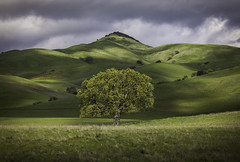Trying to compress the entire slavery/segregation struggle in the U.S. down to two pages is really hard.
Like really hard.
And tomorrow I have to work on the Irish history of the troubles/Protestant and Catholic segregation and narrow it down to two pages. Which I know even less about, so that will also be very hard.
Basically you have the gist of my life right now. Besides my carton of Ben & Jerry’s in the freezer downstairs there’s not a lot keeping me from drowning in all this history.
What I found so interesting is that the U.S. history of black slaves expanded from 1619 to 2008. In 1619 a Dutch ship brought the first permanent African settlers to Jamestown, Va. That’s 389 years of struggles. What’s the Ireland equivalent to that? I’m sure I should know the history by now but dates and events have never been my thing. So tomorrow I will compare some time lines and see what similarities and differences I can divulge between my home in America and my current home in Northern Ireland.
I realize that this is a huge subject to use as my main piece for the journalism website, but fear not. With the help of my lifesaver Joan Weber I hope to continually narrow my focus until I find something interesting between these two places that I can respectably compare and contrast without making a huge fool of myself.
Today Joan and I spoke of forced busing and how something similar to that would work in Northern Ireland. In 1954 after the Brown v. Board of Education decision made racial segregation in public schools unconstitutional students in black neighborhoods were bused to schools in white neighborhoods and vice versa. This was seen as one of the only ways to integrate schools. So we were wondering, how would that work in an area like Belfast? Would Protestants and Catholics be able to force their children to knowingly attend school together? It is a question I posed to a very knowledgeable researcher and hopefully he will get back to me in the next few days and I can expand on my research. But for now, we wait, and compare timelines.






